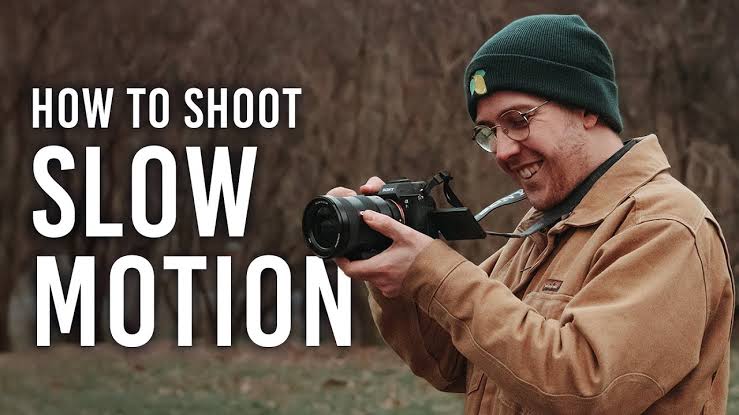Explore the art of slow-motion videography and learn how to highlight intricate details in your footage. This comprehensive guide covers the principles of slow motion, technical requirements, equipment choices, creative applications, and post-production techniques. Discover how to enhance storytelling through slow motion, whether in action sequences, nature documentaries, or emotional moments. Perfect for filmmakers and content creators looking to elevate their visual storytelling.
Slow-Motion Videography Unveiling Intricacies
The use of slow motion videography has gained traction in the realms of filmmaking and casual video creation. By recording action at a slower frame rate than usual this method enables filmmakers to showcase details that might otherwise be overlooked in time. Slow motion videography not enhances the narrative with an impact but also enriches storytelling by offering viewers a fresh perspective on moments. This article delves into the principles of slow motion videography its technical components and its diverse applications across film genres.
Understanding Slow Motion
Slow-motion videography is all about capturing video at a higher frame rate than the standard playback speed. Typically, this means recording at a rate of 60 to 120 frames per second and then playing it back at 24 or 30 frames per second. Some advanced cameras can even go beyond these frame rates. This difference in speed creates the effect of motion when the footage is shown. For example if you record at 120 frames per second and then play it back at 30 frames per second the action appears to be stretched out, over four times its original length.
To achieve slow motion filming there are factors to consider, such as shutter speed, lighting conditions and camera settings. It's important to use a shutter speed that's at double the frame rate. For instance if you're shooting at 120 frames per second your shutter speed should be set to at least 1/240 of a second. This helps prevent blur and ensures that the details of the action come out sharp and clear.
Choosing the Right Equipment
To achieve slow motion footage the choice of equipment plays a crucial role. While many consumer cameras now offer slow motion features higher end cameras with sensors and advanced image processing capabilities tend to deliver results. DSLRs and mirrorless cameras are favored by videographers because they allow control over settings and often offer higher frame rate options.
The quality of slow motion footage is also influenced by the lens used. A lens with an aperture lets in more light which is especially useful when shooting at frame rates since they require additional light for exposure. Moreover using a tripod or stabilizer is vital for ensuring shots as any camera shake can be amplified in slow motion.
When it comes to slow motion videography lighting plays a role. To capture slow motion shots with shutter speeds it's crucial to have lighting. In dimly lit environments videographers might need to use supplementary lighting gear to get the exposure they want without sacrificing the footage quality.
Creative Applications of Slow Motion
Slow-motion videography presents an opportunity, for storytelling and artistic expression across genres. One notable application of slow motion is in sequences. By decelerating rapid actions like fight scenes or sporting events filmmakers can emphasize the intensity and nuances of the movements resulting in a captivating experience for the audience. This technique enables viewers to recognize the skill and athleticism demonstrated in each action making it more impactful.
In wildlife documentaries slow-motion videography proves to be effective in highlighting the beauty of creatures and the intricacies of their behaviors. Watching animals in motion allows audiences to admire the intricate details of their movements such as a birds wing flutter or the gentle ripples created by a swimming fish. This not enhances the viewing experience but also nurtures a deeper connection, between the audience and the natural environment.
In storytelling slow motion can enhance moments. By stretching out impactful scenes filmmakers can elicit reactions from the audience. Whether its a touching reunion, a dramatic separation or a milestone slow motion can emphasize the weight of these instances giving viewers time to fully grasp the emotions portrayed.
Editing and Post-Production Techniques
The part of the process is crucial, for improving motion videos. In the editing stage adding color grading can enhance the footage's visual charm by highlighting colors and ensuring a consistent appearance throughout the video. Moreover sound design plays a role; blending sounds, music and sound effects can elevate the impact of the slow motion scenes.
When working on motion footage it's important to pay attention to the timing. Slow motion clips can significantly change the pace of a video so it's essential to carefully consider how these shots fit into the overall structure. Switching between speeds and slow motion can create effects but it needs to be done thoughtfully to keep the audience engaged.
Challenges and Considerations
Although slow motion videography provides opportunities it also comes with its own set of challenges. Achieving slow motion footage requires attention to detail, such as lighting and camera settings. Moreover if not handled motion blur can produce results in the final video.
Furthermore using slow motion can diminish its effectiveness. When used and purposefully slow motion can enhance moments that leave a lasting impression on viewers. On the hand excessive slow motion may lessen impact and risk losing the audiences interest.
Conclusion
Filmmakers and content creators often utilize slow motion videography as a powerful tool to elevate their storytelling. By capturing moments in a way that emphasizes intricate details and stirs emotional reactions slow motion can turn scenes into extraordinary experiences. Mastering this art form requires understanding aspects selecting the right equipment and employing techniques. As videographers delve into the realm of motion this technique is sure to stay a key element in the arsenal of visual storytelling. Whether it's in action movies, documentaries or heartfelt narratives slow motion videography consistently mesmerizes audiences and breathes life into stories with vivid precision.
